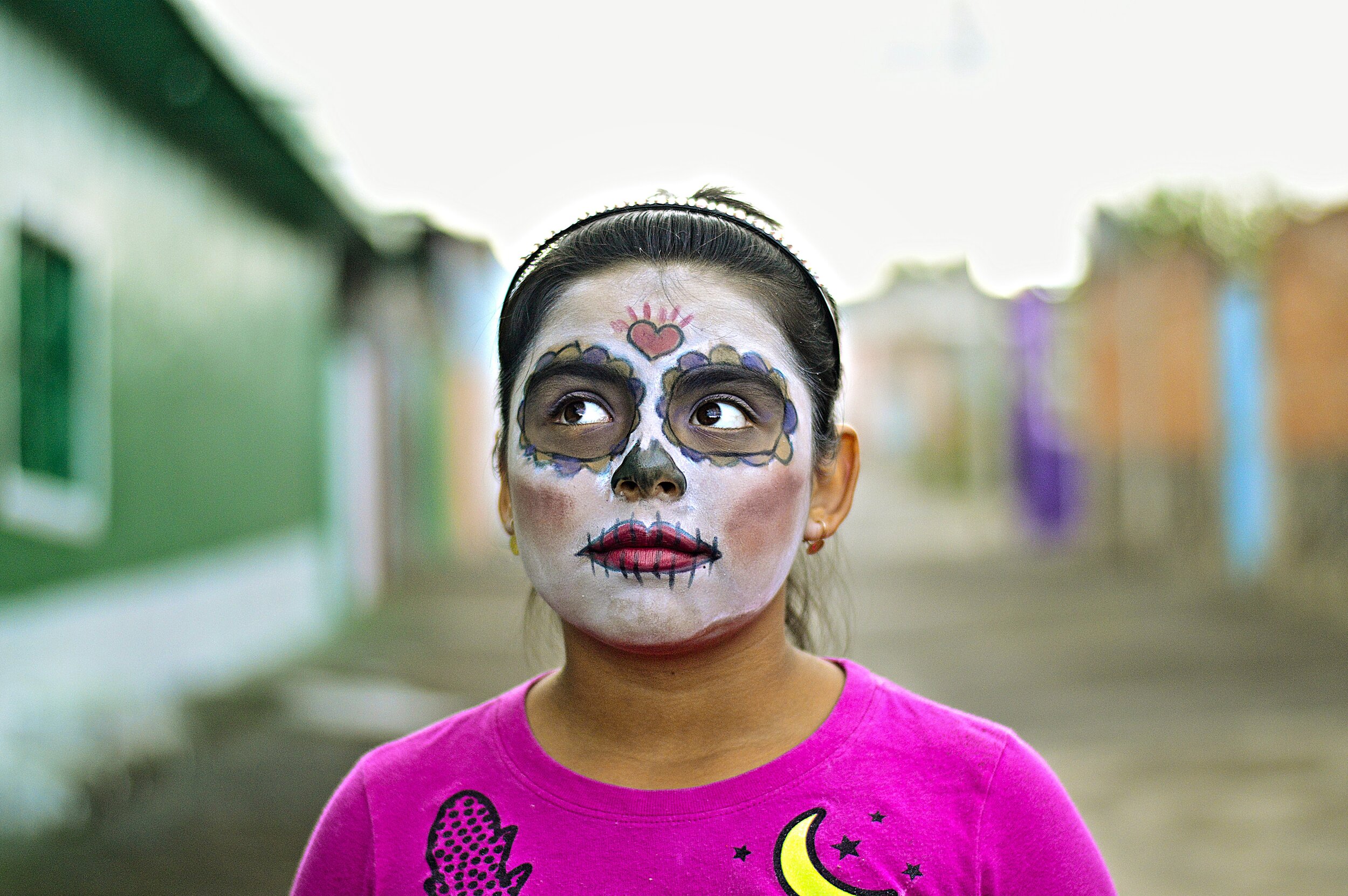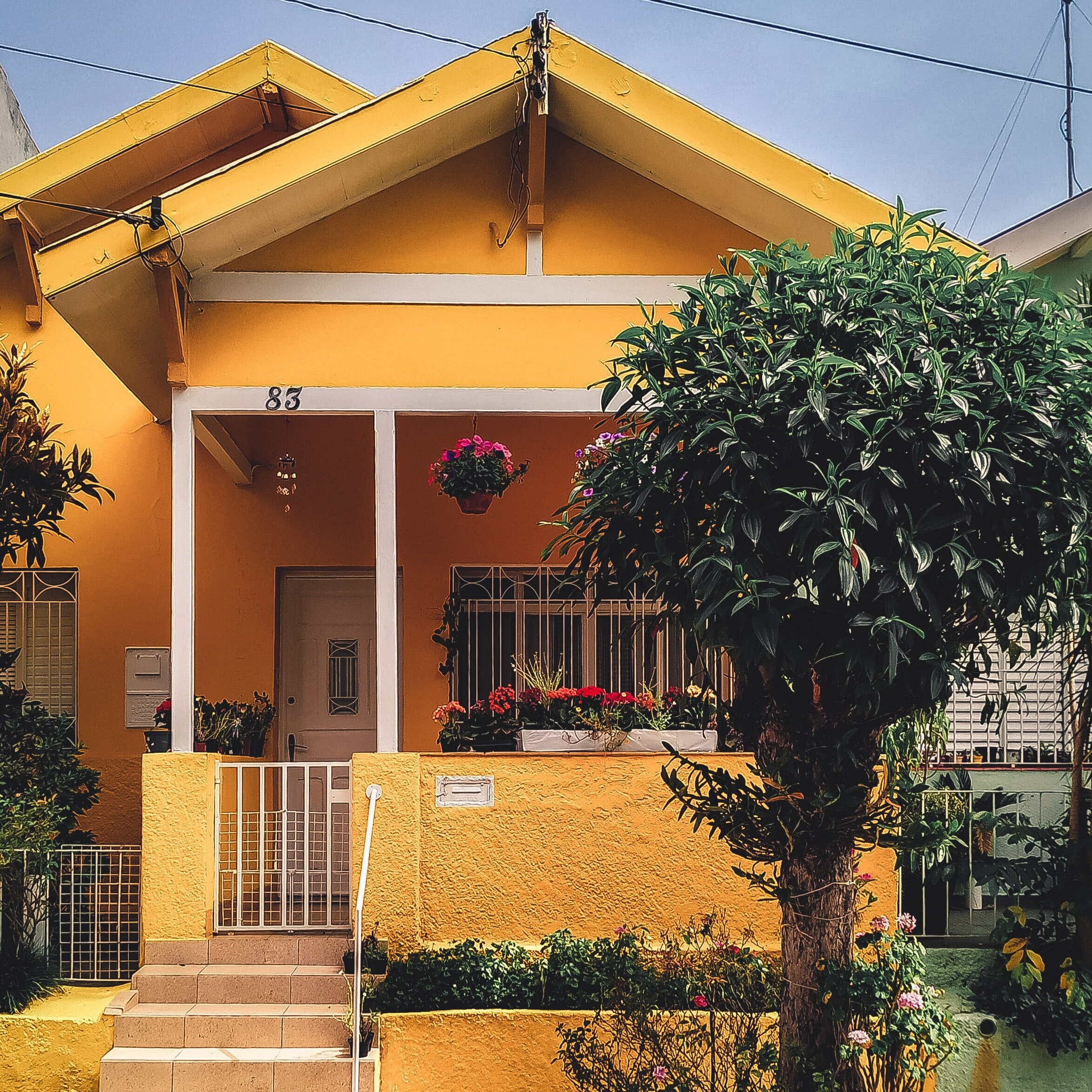En La Sala and All Along the Way
En La Sala and All Along the Way
Welcoming the Next Generation into Faith Through Storytelling
“See, a long time ago, there was this family.” ”
Family always begins with a story. Grandma, eyes shining, recounts how Grandpa made a fool of himself asking her out. Dad remembers how hard life was that first year in America. Auntie laughs at the mistakes she made the time she changed the rice recipe. While cultural artifacts—a photograph, blanket, or dish—spark the telling of a story, the words themselves, repeated by a loved one, trace familial origins and teach values. The act of remembrance through story—an often unidentified ritual—binds subsequent generations together in shared experience.
Disney Pixar’s 2017 film Coco begins with the story of a family. A happy, music-loving family forever altered when the beloved Papa never returns home with his guitar. Miguel, a young boy and the protagonist of the film, cannot change the fact that his great-grandfather abandoned the Rivera family for a music career, leaving his great-grandmother to survive by starting a shoe business. Though extreme, we are not surprised to learn that the Rivera family now hates music, a fact often repeated as a concluding value of the family story and highlighted alongside great-grandmother’s resiliency. As the evening of El Día de los Muertos (The Day of the Dead) commences, the story of the Rivera family comes alive for Miguel, as he enters the world of the dead in search of not only his family, but validation of the values passed down to him. Miguel’s journey is one of remembrance, which solidifies his identity as a Rivera.
Storytelling is something the Latino community does well. Chicago native Jose Gonzalez highlighted this in his standup production series this summer entitled, “La Sala: Cuentos from the Latino Living Room.” Bianca Sanchez, in her Chicago Tribune article, shares the significance of story and poetry in Gonzales’ upbringing, taking place in the living room or on the front porch, as his Nicaraguan immigrant father shared Bible passages, parables, and stories of the past. Gonzalez expressed that key to his production was: “that feel, that ambience, that you are actually at home in la sala (the living room), just listening to stories and tales as if they were from your mom, your dad, your uncle or your aunt.”[1] Familial stories and proverbs, of tragedy, hope, humor, and lessons learned, serve as a means of teaching core family values from one generation to the next. The social capital of character, faith, and loyalty extend outward from the family to the community in which they reside. Yet, as Sanchez emphasizes in conclusion, “before being told outside the home [stories] are first shared in la sala.”[2]
Storytellers Carmen Agra Deedy and Karla Campillo-Soto concur on the impact of storytelling in Latino families and the Hispanic community at large. In their interview with Stephen Winick of the American Folklife Center of the Library of Congress, Deedy and Campillo-Soto share stories from their Cuban and Mexican upbringings, including immigration and transition to the United States. As storytellers, Winick points out that these Latinas choose to focus on family stories. Deedy explains: “It’s so cultural for us, you know, the [sic] everything begins at home. And the most tragic story you could ever read, write, sing about, would be about the child who has no home. Inevitably my stories weave back to home.”[3] Storytelling is by no means specific to Hispanic families and communities, but in every family, Deedy explains, there is a storyteller. These individuals carry on the remembrance of the past, welcoming the younger generation into a living example of that which the family holds dear.
Storytelling takes on new meaning for God’s people when looking at the development and furtherance of faith in the Old Testament. Standing on the border of the land of promise, after forty years of waste and wandering, Moses looked out at a people marked by the choices and stories of their parents and spoke these words:
Only take care, and keep your soul diligently, lest you forget the things that your eyes have seen, and lest they depart from your heart all the days of your life. Make them known to your children and your children's children— how on the day that you stood before the Lord your God at Horeb… he declared to you his covenant, which he commanded you to perform, that is, the Ten Commandments, and he wrote them on two tablets of stone."[4]
God gave his people a commandment of remembrance—by recounting the stories of the past, they would invite the next generation into the continual and living story of obedience to God’s faithful love. Further instruction was given in Deuteronomy chapter six, explaining that in all of life, while sitting in la sala, while walking along the way, when going to bed and rising in the morning, parents are to teach their children the words of the Lord, with the intent of the multiplication of God’s people in the land.
And so, Jesus too delivered a command of remembrance. This command is lived out weekly as we, the Church, gather to break bread and sip wine. These physical elements of communion, like blankets and photographs, recipes and furniture, prompt the telling of the story of our faith. We remember both the physical body of the incarnate Christ, broken to allow all people into the living story of God and our personal stories of redemption. It was during this moment in a recent church service that I watched a mother give her daughter the bread and juice. Jessie is only six, but her thoughts in children’s church display an inner understanding of the gospel, as she retells the truths she learns at home when talking and praying with her mom and grandmother. Jessie is the youngest generation of the Church, being welcomed into the living story of the gospel through her mother’s faith and faithful storytelling.
On October 31st El Día de los Muertos will commence and many Mexican families will leave photos of their loved ones on the ofrenda.. On November 28th, American families will gather to give thanks, remembering the goodness of the year with food, laughter, and football. Memories will be relived, stories told. These special days are known for storytelling. But so is today. While cooking dinner or driving to soccer practice, God has given parents and grandparents the unique opportunity to welcome their children into the shared experience of a living faith. A hospital bracelet becomes a reminder of a story of God’s healing. An old journal or sketchbook an opportunity to retell a critical moment in your faith journey. Driving by my mom’s first apartment this summer, prompted her to share the powerful impact of Christian community in her life as a young adult with no believing family. A story I resonate with, living far from my own family support system. Her story welcomed me into the journey of faith we both share. Just as the elements of communion remind the older generation of the faithful love of God, let them be the spark for the words, the stories of His provision, an honest recounting of the challenges of walking in obedience. So then, as the youngest of the Church step out of the security of la sala, they will know who they are—members of the family of God.
About Emily C. Alexander
A first generation college graduate of a rural working class family, Emily C. Alexander recently completed her undergraduate degree in Ministry to Women at the Moody Bible Institute. Emily lives in Chicago where she enjoys long walks admiring architecture and pondering theological and sociological issues. Her hope is to impact the lives of women and the flourishing of the church through thoughtful theological engagement.




















![CC BY-SA 2.5, https://commons.wikimedia.org/w/index.php?curid=937608 [5]](https://images.squarespace-cdn.com/content/v1/5dfd8beb22732d3b23495b1f/1577989241484-HKVUQ3DOPNPRI92VFOG4/Adams_onis_map.png)

